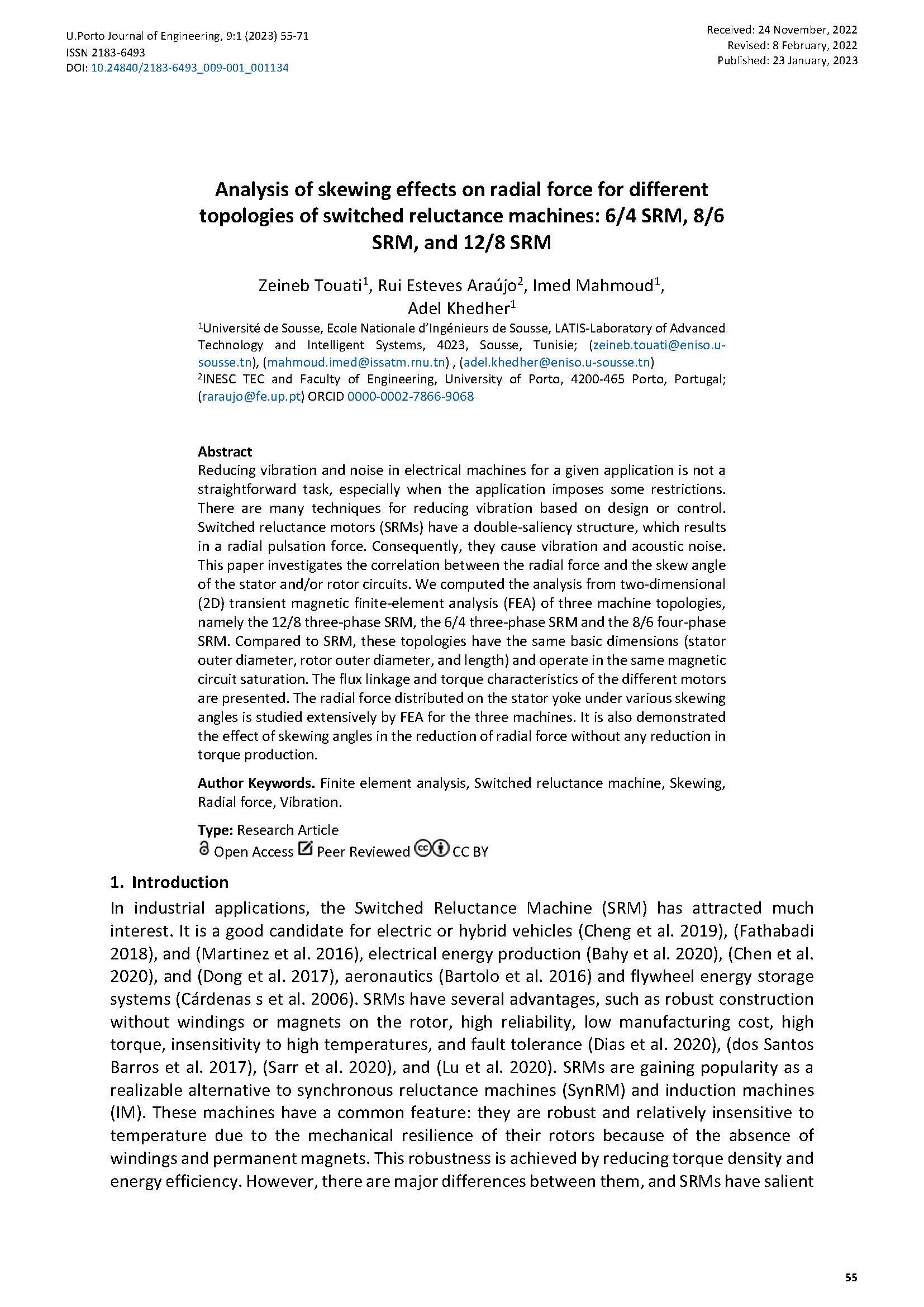Analysis of Skewing Effects on Radial Force for Different Topologies of Switched Reluctance Machines: 6/4 SRM, 8/6 SRM, and 12/8 SRM
Main Article Content
Abstract
Reducing vibration and noise in electrical machines for a given application is not an easy task, especially when the application imposes some restrictions. There are many techniques for reducing vibration based on design or on control. Switched reluctance motors (SRMs) have a double-saliency structure, which results in a radial pulsation force. Consequently, they cause vibration and acoustic noise. This paper investigates the correlation between the radial force and the skew angle of the stator and/or rotor circuits. The analysis is computed from two-dimensional (2D) transient magnetic finite-element analysis (FEA) of three machine topologies, namely the 12/8 three-phase SRM, the 6/4 three-phase SRM and the 8/6 four-phase SRM. Compared to SRM, these topologies have the same basic dimensions (stator outer diameter, rotor outer diameter, and length) and operate in the same magnetic circuit saturation. The flux linkage and torque characteristics of the different motors are presented. The radial force distributed on the stator yoke under various skewing angles is studied extensively by FEA for the three machines. It is also demonstrated the effect of skewing angles in the reduction of radial force without any reduction in torque production.
Downloads
Article Details

This work is licensed under a Creative Commons Attribution 4.0 International License.
Authors who publish with this journal agree to the following terms:
- Authors retain copyright and grant the journal right of first publication with the work simultaneously licensed under a Creative Commons Attribution License that allows others to share the work with an acknowledgement of the work's authorship and initial publication in this journal.
- Authors grant the journal the rights to provide the article in all forms and media so the article can be used on the latest technology even after publication and ensure its long-term preservation.
- Authors are able to enter into separate, additional contractual arrangements for the non-exclusive distribution of the journal's published version of the work (e.g., post it to an institutional repository or publish it in a book), with an acknowledgement of its initial publication in this journal.
- Authors are permitted and encouraged to post their work online (e.g., in institutional repositories or on their website) prior to and during the submission process, as it can lead to productive exchanges, as well as earlier and greater citation of published work (See The Effect of Open Access).

